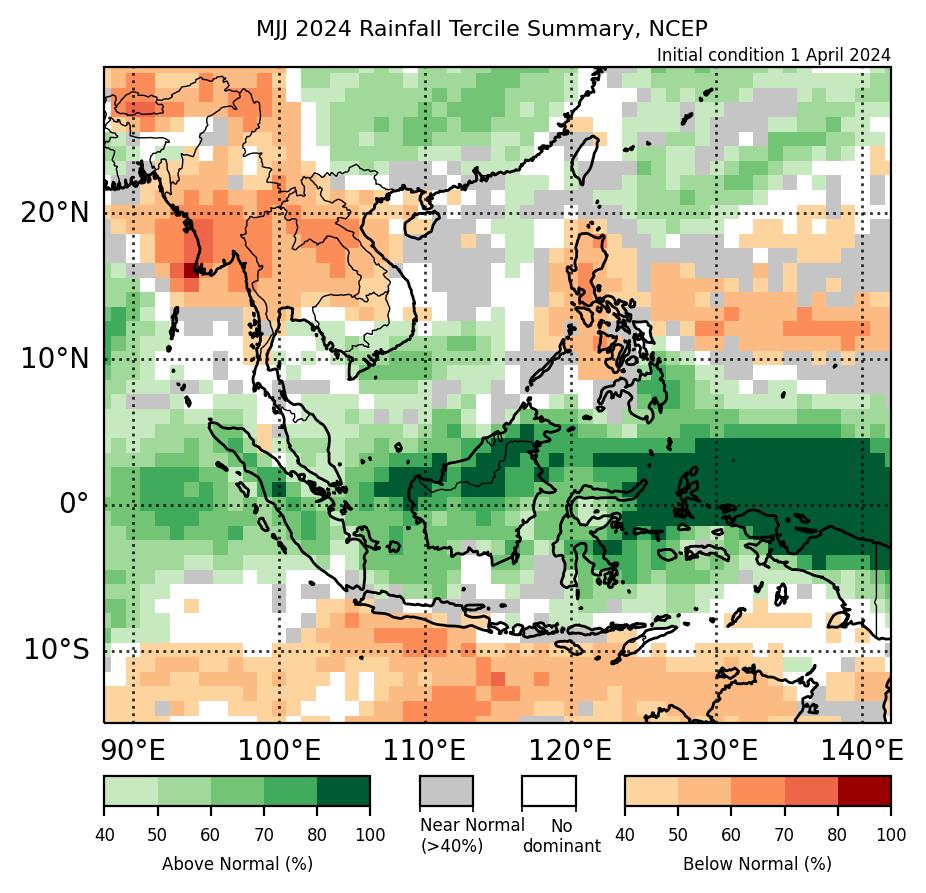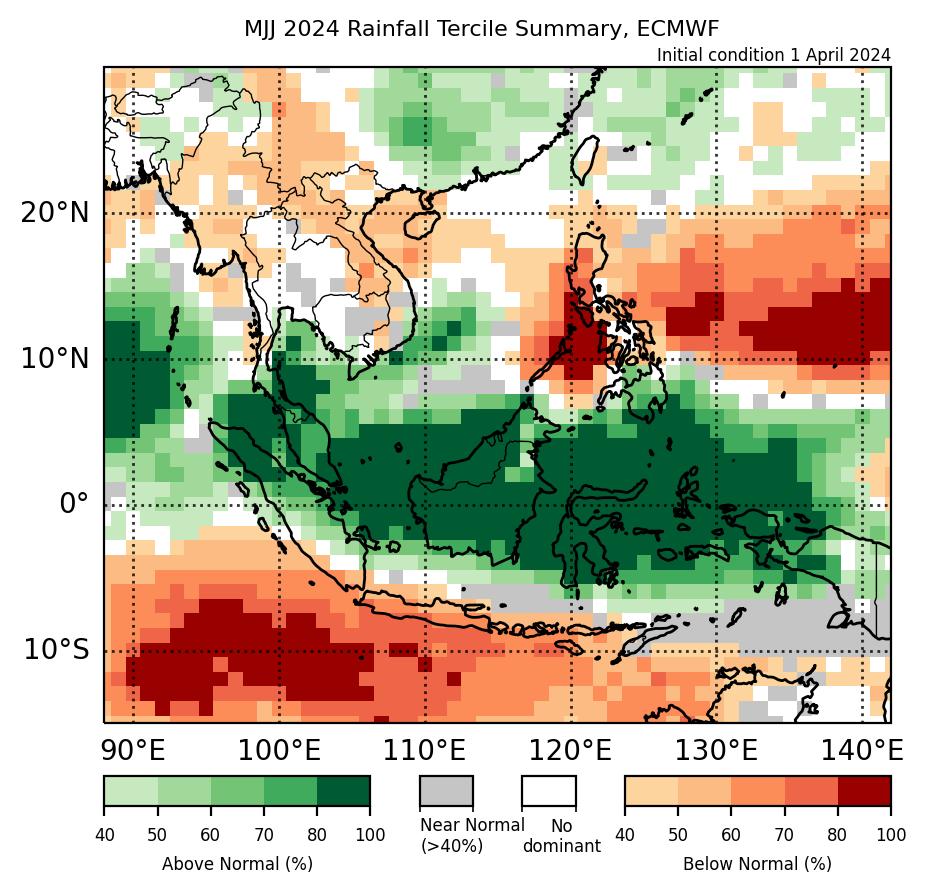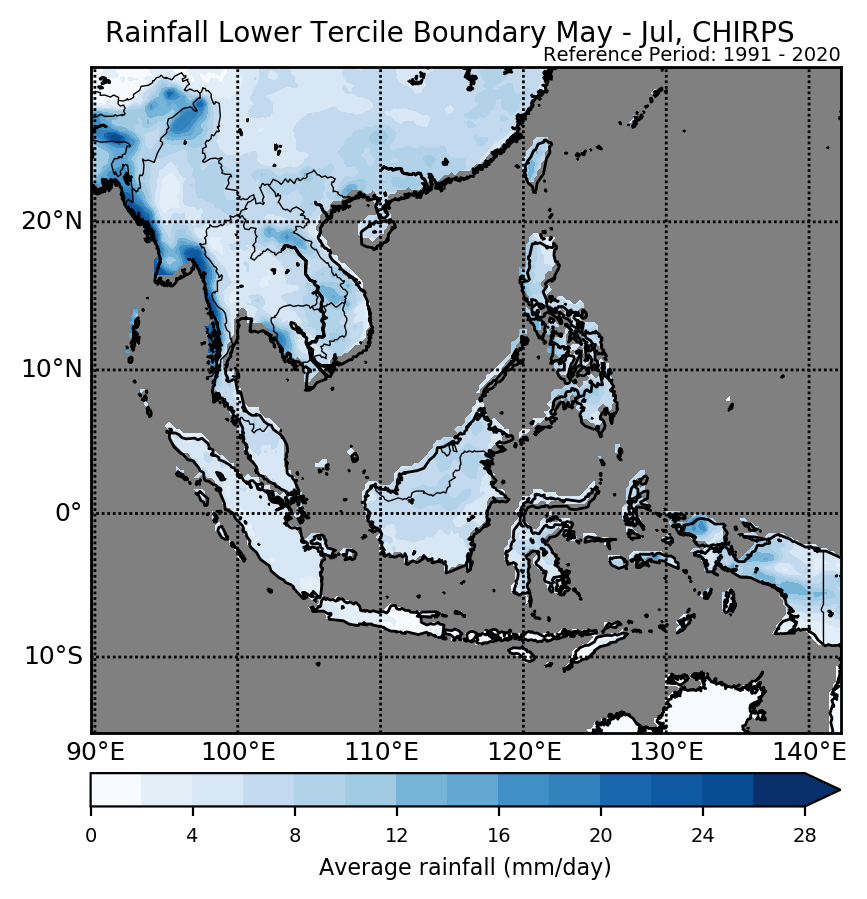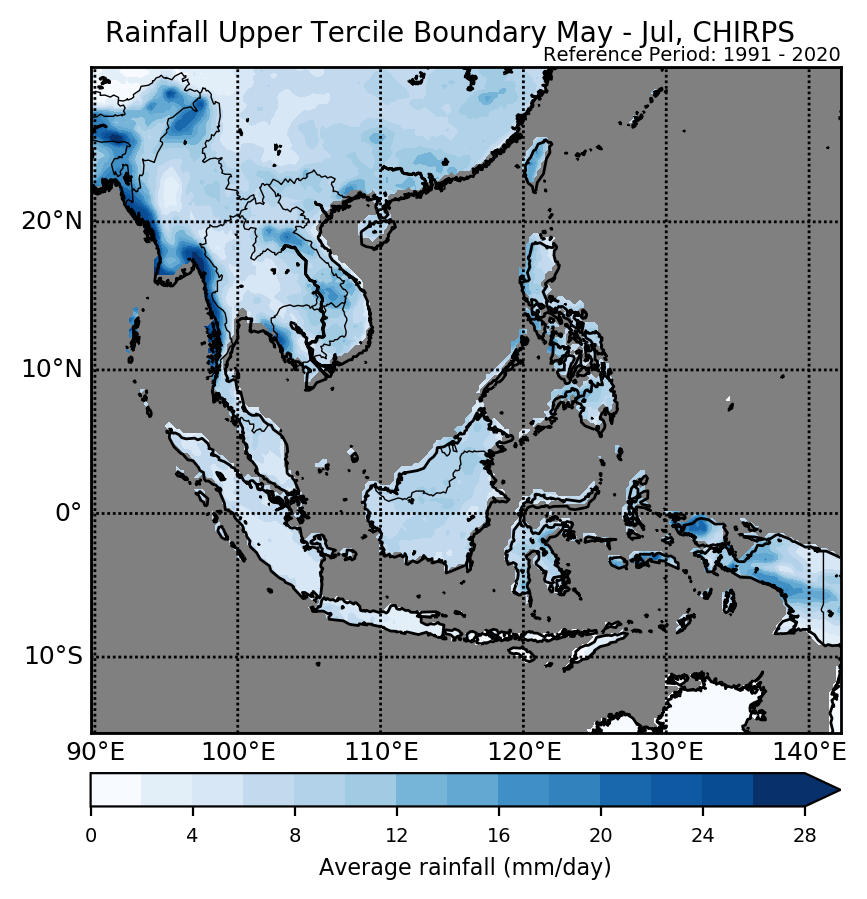Rainfall
Seasonal Rainfall Outlook: May-July 2024 (MJJ)
Issued: 30 Apr 2024
For MJJ 2024, above-normal rainfall is predicted for the equatorial region with below- to near-normal rainfall elsewhere.
For MJJ 2024, above-normal rainfall is predicted for the equatorial region based on the multi-model ensemble (Figure 4). All three models predict above-normal rainfall with high confidence over Borneo, northern parts of Sumatra and the eastern equatorial region (Figures 1 – 3). Only the ECMWF model predicts with high confidence above-normal rainfall over the western Maritime Continent, with the NCEP and UKMO models predicting near- to above-normal rainfall for this region. Models’ skill is moderate to good for above-normal rainfall over the equatorial region.
Elsewhere, a mix of below- to near-normal rainfall is predicted based on the multi-model ensemble (Figure 4). All three models are in agreement with the below-normal rainfall over the northern half of the Philippines (Figures 1 – 3). Over Mainland Southeast Asia, the NCEP model predicts below-normal rainfall with the highest confidence, with both the ECMWF and UK Met Office models predicting predominantly below- to near-normal rainfall. For the southern Maritime Continent, the ECMWF and UKMO models predict a high chance of below-normal rainfall, while the NCEP model predicts below- to near-normal rainfall. The models’ skill for below-normal rainfall is relatively good over Philippines and low to moderate over Mainland Southeast Asia and the southern Maritime Continent.

Figure 1: Rainfall tercile summary predictions of NCEP model for MJJ 2024 (contains modified Copernicus C3S information).

Figure 2: Rainfall tercile summary predictions of ECMWF model for MJJ 2024 (contains modified Copernicus C3S information).

Figure 5: Average climatological rainfall's lower tercile boundary for MJJ based on CHIRPS (Reference period: 1991-2020).

Figure 6: Average climatological rainfall's upper tercile boundary for MJJ based on CHIRPS (Reference period: 1991-2020).
The qualitative outlook is assessed for the region in general. For specific updates on the national scale, the relevant ASEAN National Meteorological and Hydrological Services should be consulted.